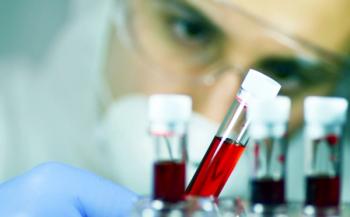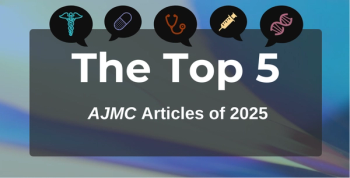
Chemotherapy With Radiation Can Improve Outcomes in Glioma Patients
Patients with grade 2 glial brain tumors (gliomas) who were treated with radiation therapy (RT) and chemotherapy had a longer progression-free survival and overall survival than those who received RT alone.
Patients with grade 2 glial brain tumors (gliomas) who were treated with radiation therapy (RT) and chemotherapy had a longer progression-free survival (PFS) and overall survival (OS) than those who received RT alone.
The long-term results of the phase 3 RTOG 9802 (A Phase III Study of Radiation With or Without PCV Chemotherapy in Unfavorable Low-Grade Glioma) trial have now been published in The New England Journal of Medicine. The study enrolled 251 patients, 18 to 39 years of age, diagnosed with grade 2 astrocytoma, oligodendroglioma, or oligoastrocytoma between 1998 and 2002. Eligibility criteria included the requirement for subtotal resection or biopsy. Patients were randomized to receive RT alone or RT followed by 6 cycles of procarbazine, lomustine (CCNV), and vincristine (PCV). The study evaluated whether tumor response could be associated with the expression of a mutated form of the protein isocitrate dehydrogenase or IDH1.
Following a median follow-up of 11.9 years, 67% of trial participants presented with tumor progression and 55% had died. Of these, patients in the RT plus PCV arm had a significantly longer median OS compared with those in the RT arm (13.3 years vs 7.8 years, respectively; P = .003). Median PFS for patients in the RT arm was 4 years, much lower than patients treated with the combination (10.4 years). Ten-year PFS and OS rates for patients in the RT plus PCV arm versus those in the RT alone arm were 51% versus 21% and 60% versus 40%, respectively. The authors report that favorable prognosis was associated with the following:
- Treatment with RT and PCV
- Oligodendroglioma histology
- Mutation in the IDH1 protein
- Young age
The chemotherapy regimen did increase treatment-related toxicities, which included fatigue, anorexia, nausea, and vomiting, which were mostly grade 1/2 in severity with the exception of grade 3/4 neutropenia.
“Our results indicate that initial therapy of RT followed by PCV is necessary to achieve longer survival in patients with grade 2 glioma and that salvage therapy at relapse after RT alone is less effective,” said Jan C. Buckner, MD, lead author on the study, in a statement. “It has also been hypothesized that other genetic alterations may be responsible for a small subset of patients whose glial brain tumors are chemotherapy-resistant. However, radiation therapy plus PCV appears to represent the most effective treatment identified to date for the majority of patients with grade 2 glioma.” Buckner is a professor of oncology at the Mayo Clinic College of Medicine and Deputy Director for Practice at the Mayo Clinic Cancer Center in Rochester, Minnesota.
Reference
Buckner JC, Shaw EG, Pugh SL, et al. Radiation plus procarbazine, CCNU, and vincristine in low-grade glioma. N Engl J Med. 2016;374:1344-1355. doi:10.1056/NEJMoa1500925.
Newsletter
Stay ahead of policy, cost, and value—subscribe to AJMC for expert insights at the intersection of clinical care and health economics.








































